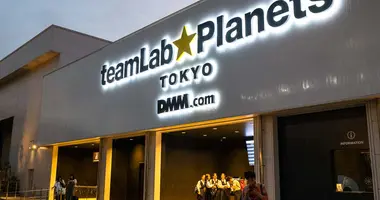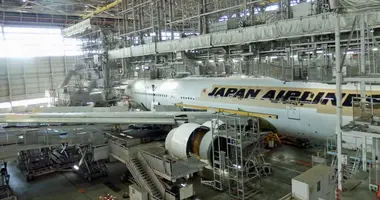Shinjuku Historical Museum
Shinjuku Historical Museum: read a guide to the Shinjuku Historical Museum, memorably covering the history of one of Tokyo's most important wards.
Shinjuku Historical Museum 新宿歴史博物館
- Shinjuku Historical Museum
- Shinjuku Historical Museum Displays
- Shinjuku Historical Museum Layout
- Shinjuku Historical Museum Hours and Admission
- Shinjuku Historical Museum Access
- Japan Museums
 Shinjuku Historical Museum, Tokyo.
Shinjuku Historical Museum, Tokyo.
Shinjuku Historical Museum Overview
The Shinjuku Historical Museum is a modern and imaginative presentation of the history of one of Tokyo's most important wards: Shinjuku. While there is little English signage on the displays themselves, the accompanying explanatory pamphlets are available in English, and there is enough about this museum to recommend it even to those who do not read Japanese.
According to the Museum, Shinjuku has been a site of human activity for at least the past 30,000 years, back to the Paleolithic era (i.e. the dawn of the development of primitive stone tools). The earliest recorded place name in present Shinjuku ward dates back to the 14th century medieval era.
The name Shinjuku itself was born in 1698, in the Edo era of Japanese history as "Naito-Shinjuku," after the baronial Naito family whose residence occupied much of what is now Shinjuku Gyoen Park. From the late 19th century, Shinjuku became a merchant area, and the focus of activity moved from east to west Shinjuku with the inception in 1885 of the Japan Railway line, or what is now called the Yamanote line.


Shinjuku Historical Museum Displays
The Shinjuku Historical Museum has five sections on its B1 floor, which houses the following exhibits:
Archeological Shinjuku: a small display of mainly ryukisenmon (linear applique-style) pottery artifacts from as far back as the approx. 12,000 B.C. Jomon period, housing relics, and Nara period cave tomb artifacts found in Shinjuku's Shimo-ochiai area.
Medieval Shinjuku: this display centers on the records of the Ushigome family which lent its name to the area, dating from the mid-fourteenth century.
Edo & Meiji Era Shinjuku: The Edo era is when modern Shinjuku began, and the exhibits feature a life-size tanagura, or warehouse-style, building that was once a pastry shop near Yotsuya Station. There is also a scale model of what Naito-Shinjuku looked like, and a contemporary early Meiji Period period folding screen depicting the Shinjuku of that time.
Shinjuku and Modern Japanese Literature: Shinjuku has a strong association with literary greats of modern Japanese literature, starting with Natsume Soseki (1867-1916) who was born in Kikuicho, Shinjuku, and over two hundred others active here from the Meiji era, the Taisho, through to the Taisho eras, i.e. from 1868 to 1945. View original manuscripts and more from the hands of masters of Japanese literature.
Early Showa Era Shinjuku: This section is perhaps the most memorable as it features reconstructions of Shinjuku in the early Showa era (i.e. pre-World War Two). View a life-size reproduction of a fully furnished house of the time, an actual streetcar, and an impressionistic replica of a shopping street of the time that can be strolled down. One memorable display on this street is a "what's in the pockets" display of what typical denizens of that time wore and carried with them.
Shinjuku Historical Museum Layout
Besides the permanent historical exhibition area on the B1 floor, the Shinjuku Historical Museum has a special exhibition area on the same floor; a pleasant sunken garden outside, visible from all floors; and on the 2nd floor, a library and reading room and a for-hire auditorium.
Shinjuku Historical Museum Hours and Admission
The Shinjuku Historical Museum hours are 9.30 a.m. to 5.30 p.m. (last entry 5 p.m.). It is open every day, except every 2nd and 4th Monday of the month (but closed Tuesday if that 2nd or 4th Monday falls on a national holiday, in which case it is open on the national holiday).
The Museum is closed between December 29th and January 3 inclusive.
Admission is 300 yen for adults, and 100 yen for elementary and junior high school pupils.


Shinjuku Historical Museum Access
Shinjuku Historical Museum is:
- an eight-minute walk from Exit A4 of Akebonobashi station on the Shinjuku subway line;
- an eight-minute walk from Exit 4 of Yotsuya Sanchome (3-chome) station on the Marunouchi subway line;
- a ten-minute walk from Exit 2 of JR Yotsuya station.
Shinjuku Historical Museum
22 San-ei-cho, Shinjuku-ku, Tokyo 160-0008
Tel. (03) 3359 2131, Fax (03) 3359 5036
Google Map to Shinjuku Historical Museum





























